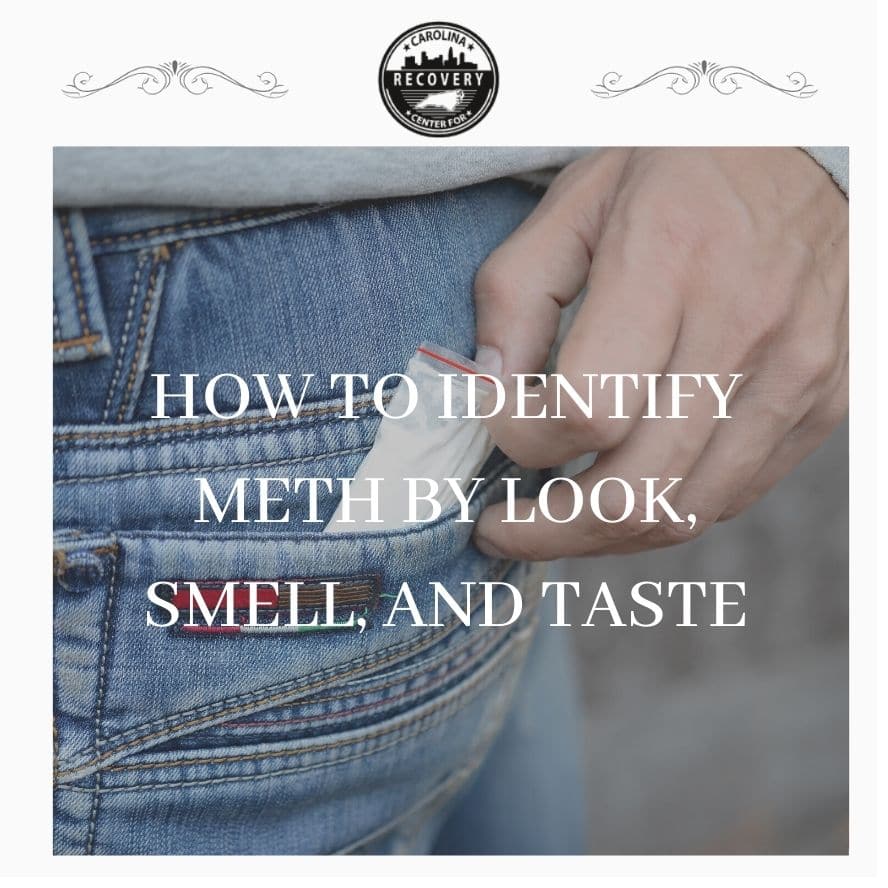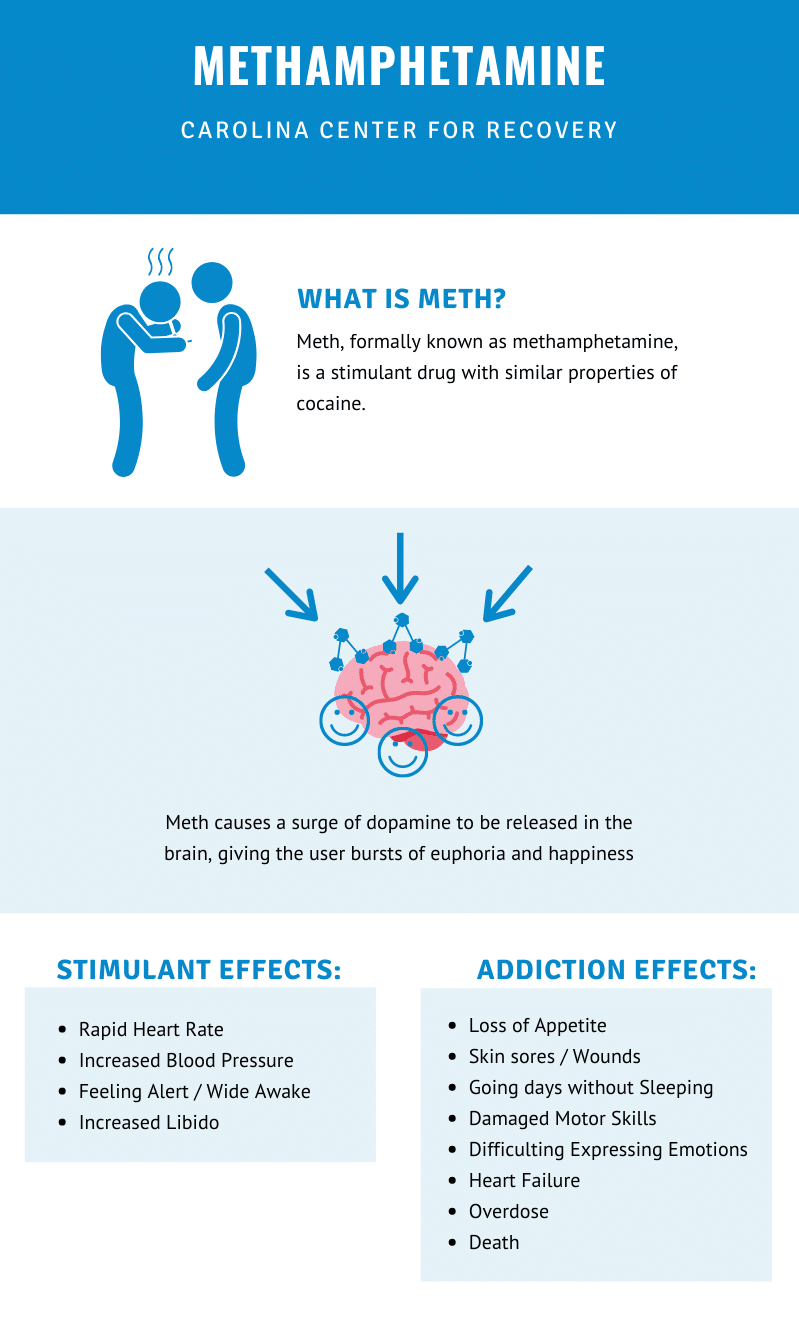How to Identify Meth by Look, Smell, and Taste

Medically Verified: 2/1/24
Medical Reviewer
Chief Editor

All of the information on this page has been reviewed and verified by a certified addiction professional.
Methamphetamine, also known as meth, crystal meth, or ice is a powerful and highly addictive stimulant drug. It is chemically similar to amphetamine, a medication used to treat attention deficit hyperactivity disorder (ADHD) and narcolepsy, but it is rarely prescribed for medicinal use. Instead, meth is manufactured in clandestine laboratories and sold illegally by drug dealers.
People can smoke, snort, swallow, or inject meth to produce an energetic and euphoric high.[1] However, depending on who makes the meth, what additives it contains, and what form it comes in, meth can look, smell, and taste differently. If you suspect someone you love is abusing or addicted to meth, it’s important to know how to identify meth by look, smell, and taste so you may be able to help your addicted loved one get the help they need.

How to Identify Crystal Meth
Meth identification can be challenging because the drug can take on different appearances, scents, and tastes. It can vary from one batch to the next and one manufacturer to the next. Law enforcement personnel typically use drug testing kits to confirm whether or not a suspected substance contains methamphetamine. However, meth can also be identified by look, smell, and taste.
What Does Meth Look Like?
Methamphetamine can come in many different forms, each of which has a unique appearance. In most cases, people purchase crystal meth that looks like broken glass fragments or crystalline rocks that can be clear, white, grey, or blue-ish white.
The shard, glass-like appearance is where the drug gets the name “crystal” and “glass.” This is the form of meth people usually think of when they think of the drug. It is also the most popular form of meth that is abused by people struggling with substance use disorder.
Meth can also come in the form of a powder, tablet, or pill.
- Powdered meth – This form of meth is usually white or light brown in color. It may look like fine sugar crystals. There may be large and small-sized “rocks” mixed in with the powder.
- Capsules of pressed tablets – Some manufacturers sell meth in the form of a capsule with powder inside of it or pressed tablets that are mixed with other additives and drugs. These tablets can mimic the appearance of MDMA and come in all different shapes, sizes, and colors.
- Pills (Desoxyn) – Methamphetamine is manufactured into a pill called Desoxyn. Desoxyn is a stimulant prescription medication used to treat ADHD and other conditions on rare occasions. These pills are white, round, and have the letters “OV” stamped on one side and the number “12” on the other.
What Does Meth Smell Like?
Pure methamphetamine doesn’t have much of a smell, however, crystal meth purchased on the streets is rarely 100% pure. In fact, meth is manufactured using a number of toxic chemicals, such as:[2]
- Ammonia
- Acetone
- Ether
- Red phosphorus
- Lithium
- Battery acid
- Cleaning products
- Paint thinner
Some of these chemicals have a strong scent. In most cases, meth will smell weakly like ammonia. However, some people say meth smells like metallic chemicals, cat urine, rotten eggs, or burning plastic.
It is never a good idea to smell a substance to try and identify meth. The chemicals used to make meth can produce toxic fumes that can cause confusion, dizziness, headaches, and respiratory products when inhaled. Some chemicals may be so corrosive that they cause a burning sensation on the mucous membranes of the eyes, throat, and nose.
What Does Meth Taste Like?
People usually describe meth as having a bitter taste. Similar to the way meth smells, it may also taste like ammonia, rotten eggs, burning plastic, and other inorganic chemicals. Meth is known for tasting very bad which is one reason why some people avoid swallowing the drug or ingesting it by mouth. When smoked, meth can leave a very poor, chemical-like taste in the mouth.
What Drug Paraphernalia Do Meth Addicts Use?
While meth can be identified by look, smell, and taste, it is often easier (and safer) to identify a meth user by examining the paraphernalia they use and their behaviors rather than by examining the substance itself. People who abuse meth may have different paraphernalia depending on which method of administration they use.
- Paraphernalia for smoking meth – glass pipe and lighter
- Paraphernalia for snorting meth – razor blade or sharp edge, rolled-up bills or cut up straws, and surfaces with powdered residue
- Paraphernalia for injecting meth – A bent spoon, cotton, lighter, syringe, and needle
What Behaviors Can Be Used to Identify a Meth User?

People who abuse or are addicted to meth will display certain unusual behaviors and physical symptoms, such as:[3]
- Extreme alertness, energy, and focus
- Increased talking
- Reduced appetite, often accompanied by weight loss
- Paranoid or erratic behavior
- Dilated pupils
- Rapid eye movements
- Inability to sleep
- Tooth and gum decay
- Picking at the skin causing sores or scars on the body
- Rapid breathing
- Profuse sweating
When the acute effects of meth intoxication wear off, users may “crash” and experience the early stages of meth withdrawal where they struggle with reduced cognitive function, intense drug cravings, depression, and more.

Find Help for Meth Abuse and Addiction Today
Meth use is extremely dangerous, addictive, and even life-threatening. Using too much meth can lead to an overdose or long-term health effects that cause permanent damage to the mind and body. If you have been able to identify a meth user whom you love, the best thing you can do is to confront them about their addiction or hire an addiction specialist to help you do so.
Meth addiction is entirely treatable with the help of medical detox services, individualized behavioral therapy, and involved outpatient programs. Don’t let someone you love struggle with addiction any longer. Contact one of our trusted addiction specialists today to see how our team at Carolina Center for Recovery can help.
References:
- https://www.drugabuse.gov/publications/drugfacts/methamphetamine
- https://www.drugabuse.gov/publications/research-reports/methamphetamine/how-methamphetamine-manufactured
- https://www.drugabuse.gov/publications/research-reports/methamphetamine/what-are-immediate-short-term-effects-methamphetamine-misuse

